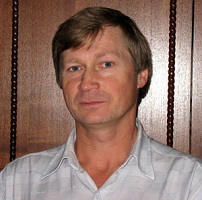The world of children in the capital of Tuva
Keywords:
Tuva; Kyzyl; children’s playgrounds; sculpture; urban architectureAbstract
The architectural specifics of the city of Kyzyl, capital of the Republic of Tuva (Russian Federation), have so far been understudied. This also concerns children’s playgrounds. Our article aims to analyze their specific features as objects of urban architecture, sculpture and sociocultural anthropology.
Tuvans do not have a tradition for setting apart plots of land for children’s games. The construction of playgrounds in Tuva began after its accession to the USSR in 1944 by borrowing the already existing Soviet construction standards. In the absence of a railway linking Tuva to the rest of the USSR, playsets were made on the spot, of wood as the most easily available material.
After the collapse of the USSR, centralized control over the federal education system, including institutions for children, weakened. Not only municipal agencies, but individuals as well could now get involved in urban improvement. A number of distinctively picturesque playgrounds appeared in the city in the 1990s and early 2000s, giving rise to a set of specific subjects of decorative sculpture featuring a plethora of ethnic imagery: wrestlers, cloth ornaments, folklore characters, Buddhist symbols, etc. Besides volunteer groups of amateur artists and builders, professional stonemasons also worked on playgrounds, utilizing the techniques of both monumental art and small outdoor statuary.
In 2003 the federal Cabinet adopted a new state standard, which set clear demands for equipping children’s playgrounds. Outdoor sport facilities and playsets could now be constructed only by certified companies. This led to a change in aesthetics and a new set of imagery, where transport and machinery featured prominently.
At the moment, Kyzyl still has a number of playgrounds with decorative structure, although they are clearly doomed. This understandable and irreversible change will nevertheless deprive the capital of Tuva of one of its most interesting and expressive architectural features.
The article is illustrated with a large number of photographs of Kyzyl’s playgrounds and decorative sculpture, taken by the author during his trip to Kyzyl in 2003.
References
Bulytova, Ch. (2014) Vo dvorakh Kyzyla ustanavlivaiutsia iarkie detskie ploshchadki [Brightly-painted playgrounds to appear in Kyzyl’s courtyards]. IA Tuvaonlain. 9 June. [on-line] Available at: http://www.tuvaonline.ru/2014/06/09/vo-dvorah-kyzyla-ustanavlivayutsya-yarkie-detskie-ploschadki.html (accessed: 09.06.2015). (In Russ.).
GOST R 52169-2003 Oborudovanie detskikh igrovykh ploshchadok. Bezopasnost' konstruktsii i metody ispytanii. Obshchie trebovaniia [GOST R 52169-2003. Setting up playgrounds for children. Structural safety and strength tests]. Elektronnyi fond pravovoi i normativno-tekhnicheskoi dokumentatsii. [Online] Available at: http://docs.cntd.ru/document/1200035713 (accessed: 08.10.2015). (In Russ.).
Detvoru prodolzhaiut obespechivat' detskimi ploshchadkami [More playgrounds provided for children] (2014). IA Tuvaonlain. 16 June. [Online] Available at: http://www.tuvaonline.ru/2014/06/16/detvoru-kyzyla-prodolzhayut-obespechivat-detskimi-ploschadkami.html (accessed: 16.06.2015). (In Russ.).
Doshkol'naia pedagogika [Pre-school pedagogy] (1978) / ed. by V. I. Iadeshko and F. A. Sokhin. Moscow, Pedagogika Publ. (In Russ.).
Kyzyl-Info. Rebiatam po ploshchadkam [Kyzyl-Info. Playgrounds for children] (2011). PlusInform. 3 November [on-line] Available at: http://plusinform.ru/kyzyl/130-kyzyl-info-rebyatam-po-ploschadkam.html (accessed: 01.10.2015). (In Russ.).
Materialy po izucheniiu Sibiri. T. III. Iskusstvo Tannu-Tuvy [Materials for the studies of Siberia. Vol.3. The Art of Tannu-Tuva] (1931) / ed. by V. V. Reverdatto, I. M. Miagkov, A. M. Kuz'min. Tomsk, Faculty of Biology, Tomsk University Publ. 34 p. (In Russ.).
Mishakova, E. N. (2012) Stanovlenie i razvitie doshkol'nykh obrazovatel'nykh uchrezhdenii v Rossii vtoroi poloviny XIX — nachala XX veka [The rise and development of pre-school education in Russia of the second half of 19th and early 20th century]: Abstract of dissertation… Candidate of Pedagogy. Volgograd. 15 p. (In Russ.).
Smirnova, E. O. (2005) Pedagogicheskie sistemy i programmy doshkol'nogo vospitaniia : ucheb. posobie dlia studentov ped. uchilishch i kolledzhei, obuchaiushchikhsia po spetsial'nosti 0313 «Doshkolnoie obrazovanie». [Pedagogical systems and programs in pre-school education: a textbook for students of pedagogical colleges and vocation schools majoring in pre-school education (subject code 0313)] Moscow, VLADOS Publ. 119 p. (In Russ.).
Uchaikina, N. I. (1993) Eticheskie idei v sotsial'nykh utopiiakh A. Sen-Simona, Sh. Fur'e, R. Ouena [Ethical ideas in social utopias by H. de Saint-Simon, Ch. Fourier and R. Owen]: Abstract of dissertation…. Candidate of Philosophy. Saransk. 19 p. (In Russ.).
Chervonnaia, S. M. (1995) Khudozhniki Respubliki Tyva = Tyva Respublikanyn churukchulary [Artists of the Republic of Tuva]. St. Petersburg, Khudozhnik Rossii Publ. 184 p. (In Russ. and Tuv.).
Published
How to Cite
Issue
Section

Author(s) license holder(s) grant rights for their work to the journal (grantee of a license) under the simple non-exclusive open license in accordance with Art. 1286.1 «Open license for a research work, work of literature or fine arts», Civil Code of the Russian Federation.
New Research of Tuva publishes articles under the Creative Commons Attribution-NonCommercial license (CC BY-NC).
Since it is an open license, author(s) reserve the right to upload the article to their institutional repository, submit it to another journal (if it allows republications), or republish it on their own website (in full, or in part).
However, several conditions apply here:
a) The republished version must always contain the name(s) and affiliation(s) of the author(s), the original title and the hyperlink to the original version on the New Research of Tuva website;
b) It must be in open access, free of charge, and no category of readers must be in any way whatsoever advantaged over general readership.
c) should the contribution be submitted elsewhere by its author(s) without substantial modification (30% or more of original text unchanged), the body of the article should contain a disclaimer that the original version was published in New Research of Tuva (with a link to the respective page)
The CC-BY-NC is a non-revocable license which applies worldwide and lasts for the duration of the work’s copyright.





